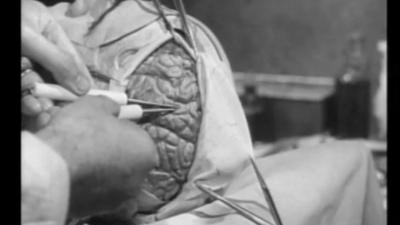
Artist’s Statement
Living Things critiques the depiction of gender and science in Cold War era B-movies. In these films, women are victimized as science goes horribly awry. Yet, representational violence is veiled by absurdity. This experimental video highlights the cultural anxieties, shifting gender roles and scientific progress, which fostered these representations.
I intercut original digital video with appropriated clips from films such as Shock (1946), The Wasp Woman (1959), and *The Brain That Wouldn’t Die** (1962) to create a layered narrative. Primarily, digital video introduces visual motifs that ground the story in universal themes. This symbolism ranges from the biblical tree of knowledge to an earth mother figure that embodies fertility. My color footage also provides a contrast to the appropriated black-and-white clips, enabling me to incorporate visual textures and patterns.
In these Cold War era B-movies, America’s fledgling suburban lifestyle is threatened by destabilized gender roles and unrestrained scientific advancement. These films are cautionary tales that meld superstition and representational violence, depicting women as human guinea pigs. A psychiatrist in Shock uses insulin shock therapy to torment a war veteran’s wife. The Wasp Woman features a cosmetics innovation that transforms an aging woman into a deadly wasp. A surgeon keeps his wife’s severed head alive against her will, as he stalks potential body donors, in The Brain That Wouldn’t Die.
On the surface, mad doctors subjugate women through quasi-scientific experiments. Yet, I subvert these depictions with archival film clips that illustrate the socio-political sphere. For instance, Shopping Center & Supermarket (1958) and Fashion on Parade (1930s-1960s) promote consumerism and beauty ideals. Hygiene for Women (1964) advocates marriage and parenthood as the “desirable pattern.” History of U.S. Foreign Relations (1940s-1970s) reinforces the implied relationship between war and madness.
The representational violence in Shock, The Wasp Woman, and The Brain That Wouldn’t Die is often obscured by melodrama. In addition, these films escape critical attention due to their secondary economic status and inferior production values. Living Things is a theoretical work that interrogates these texts by situating them in new representational patterns.